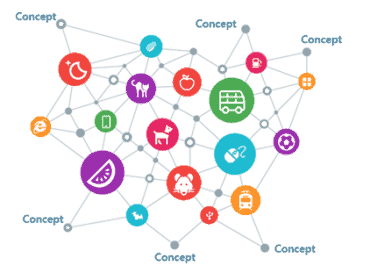
AI and facility intelligence are the missing link that ensures enterprise real estate remains secure and compliant from day one.
Although artificial intelligence (AI) has been used in cybersecurity for decades, physical security for enterprise security remains within the domain of forensics, with outdated attitudes and methodologies that until now have kept these systems in the dark ages. Facility intelligence can help.
Why? Securing a facility goes far beyond installing cameras and locking doors with access control systems. It starts with understanding an organization’s physical security risks are both internal and external and are interconnected within the facility and the business operation.
Internal risks are governed by company guidelines designed to prevent data loss, accidental leakage, shrinkage, damage, etc., by employees. And there are external risks such as damage, loss, breaches, or theft by external actors that require a different approach.
See also: Are Autonomous Buildings on the Horizon?
The problem with the status quo
When managing security systems for multiple buildings globally, using outdated analog and manual tools and processes exposes enterprises to these risks, as well as to significant compliance breaches, which cost millions of dollars in criminal activity and fines. It is essential for companies to unify their operations when they develop their risk management strategies.
It is no longer working to employ contractors using antiquated tools like Excel and CAD files which are not only static but also error laden and stored locally. The lack of visibility from this siloed data creates knowledge gaps, lost documentation, and duplicated efforts from the design stage throughout the building lifecycle. And it obstructs the functionality locked up in the data that is critical for efficiency, performance, and savings.
Thanks to today’s technological advances, such as deep learning, IoT, and cloud computing, we can finally apply data to the understanding and automatic mitigation of these risks and manage our facilities’ security systems with accuracy and efficiency.
See also: Smart Buildings Get Smarter and Expand into Real Estate
The promise of AI
In the past ten years, deep learning has emerged as a powerful tool for AI which today’s most successful enterprises are applying to building systems to reduce management costs by 70% and system design time by a massive 90%.
This represents a shift in the management of these systems, placing it firmly within the domain of the data scientists.
By applying convolutional neural networks (CNNs), graph neural networks (GNNs), and other deep learning architectures, they can automatically classify objects such as floorplans, detect objects and features within each space in a facility, and generate recommendations, 3D models and building system design in a cost-effective way and in a fraction of the time.
By accessing the previously untapped gold mine of data from security systems, IoT devices, internal regulations, and regulatory compliance, the multi-facility enterprises are making their building’s security systems efficient, compliant, and secure at a fraction of the cost of previous methodologies.
With the ability to use large amounts of existing building data from these multiple sources and combine that data with real-world data, we can create visual representations of the physical environment. Taking this a step further, facility intelligence creates a holistic view of their operations, which, when combined with AI automation, reduce management costs significantly across the global network of buildings.
By easily visualizing the data across hundreds of facilities, from devices to floor plans to door and window types, they can oversee and understand all of the components of the system to ensure they are secure and compliant with all regulations. This functionality is changing the game for enterprise operations management and real estate teams.
Leveling up: Facility Intelligence
By combining facility intelligence technology with AI, not only can an enterprise visualize its data – at a macro and micro level – but it can automate key processes for managing the facilities. This automation, the true promise of AI, can overhaul building maintenance such as vendor management, warranty renewal, and budget projections and modeling, previously managed manually with high margins for errors and breaches.
Now, not only can it identify risks, but it can immediately provide remediation alternatives. If the system finds a compliance issue, the security team can easily access the floor plan, add a camera, export the new design, arrange for the installation of the necessary camera, and automatically update the budget, warranty info, and vendor details.
From CSO to CTO
The most intensive change this technology will bring to an enterprise is the shift of management for an enterprise’s physical real estate, which now falls well within the remit of the CSO as well as the CTO.
When a CSO builds a multi-level risk strategy, it evaluates the physical security system performance under specified conditions of threat and system operation. Let’s use an example of a fintech company whose design requires a likelihood analysis of the interactions of basic security functions with the facility structure and set up, such as easily knowing how many entrances and exits a building has in case of an event.
If the floor plans and vendor information are only stored locally on a member of the real estate team’s desktop, it will be hard to access quickly or in an emergency. In the event of an iterative design change or a change of usage of the facility, the information, including floor plans, device information, and any regulatory guideline for the region, must be available and also dynamic in order to document the changes and make sure they are compliant.
Working with facility intelligence, the real estate team can now collaborate with both the CSO and the technology team to ensure all building data is available, consistent, and compliant across the organization. Keeping in mind security is a dynamic, ever-changing utility, compliance gives rise to potential security breaches at any time. The ability to access full oversight of a facility’s system data supports always-on security teams in keeping up with changes and company needs.
Designing new spaces: Digital twins are a game changer
Beyond just the management, designing a building’s security systems is a complex process for both new builds and retrofits and renovations. Beyond the systems themselves, there are thousands of considerations that are virtually impossible to manage manually with analog technology: from the location of different departments to door types to security camera placement.
This is where working with facility intelligence technology is a game changer. It models the position and features of the building, taking into account the thousands of company internal rules and guidelines as well as local government regulations. For example, server rooms must only have one door, so not every space within a facility would be appropriate for this function. And attempts to design a server room in a location with double access would be automatically flagged.
An AI platform with facility intelligence of facilities reduces system and infrastructure design time from months to days – working out to be significantly quicker than using previous methods. The technology also mitigates operational costs associated with manual processes, errors, and rework and reduces the risk of compliance and regulatory breaches.
The big picture
AI and machine learning can be applied to both new facilities and the management of existing ones to streamline workflows and provide valuable insights across the entire organization. It improves internal processes by automating approvals for changes and new designs and by integrating with existing company technology.
By understanding the data behind the entire network of building systems, enterprises access critical business insights as well as industry landscape insights. Beyond just general maintenance, the C-suite can use the data to make informed business strategy decisions. It can benchmark operational performance against other facilities within the same region, business, or industry to gain a better understanding of the external risks their business can face.
AI and facility intelligence are the missing link that ensures enterprise real estate remains secure and compliant from day one. It overhauls an enterprise’s internal infrastructure and management of outside entities for efficient management of safe, secure, and compliant buildings.




























